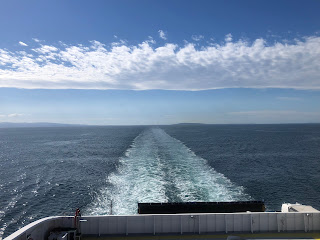Final thoughts.

Back from honeymoon and time for Charlotte to admire her beautiful wedding day bonnet before storing it carefully away in the parsonage. After 34 days away the newlyweds probably wearily climbed the stairs of the parsonage to the bedroom they would only get to share for the next 8 months. Charlotte and Arthur were back in Haworth on 1st August 1854. But there was no rest for a busy Charlotte and Arthur. As Charlotte wrote in a letter to Ellen Nussey on 9th August 1854: "Since I came home I have not had an unemployed moment; my life is changed indeed - to be continually wanted - to be continually called for and occupied seems so strange: yet it is a marvellously good thing...As far as my experience of matrimony goes - I think it tends to draw you out of, and away from yourself." She also wrote the following in a letter to Margaret Wooler on 19th September 1854: " My own life is more occupied than it...


